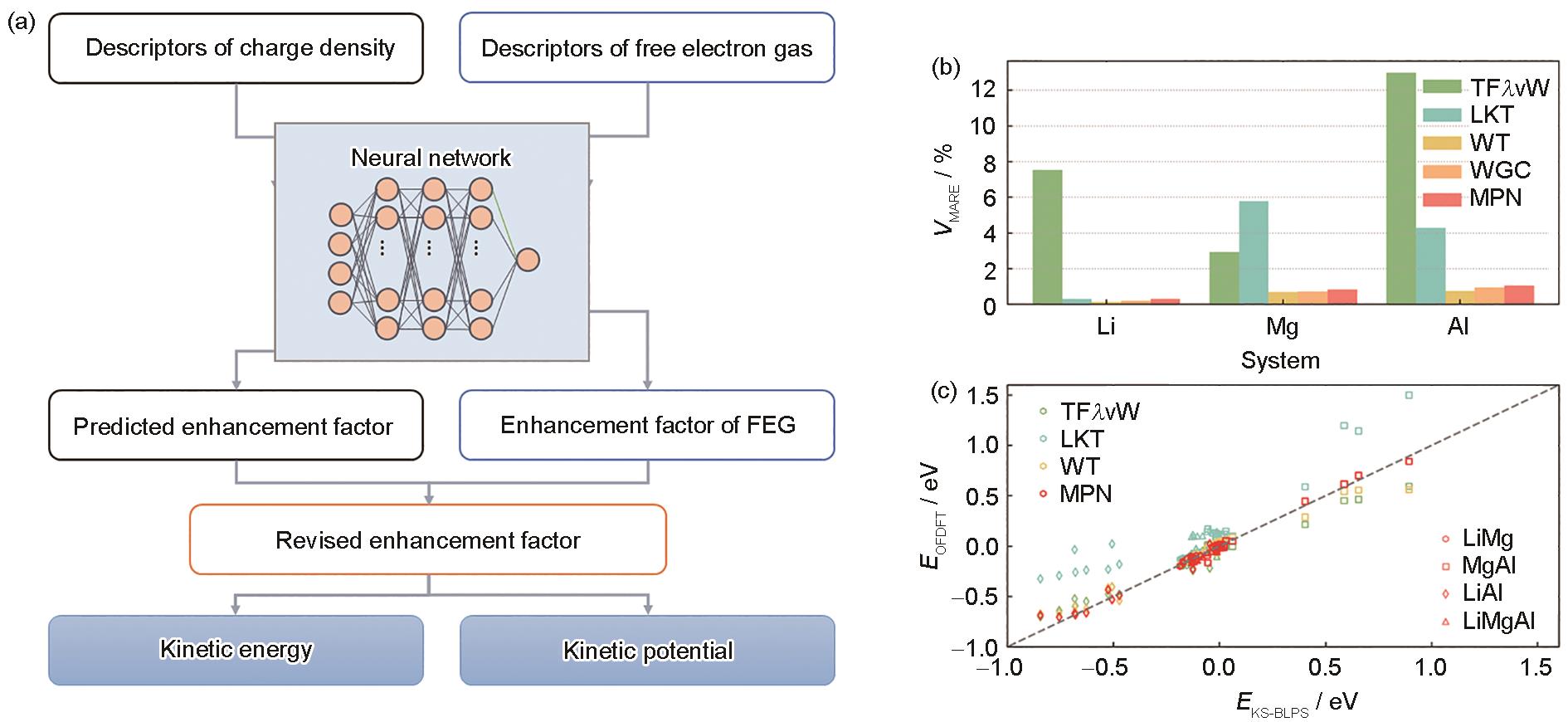密度泛函理论软件ABACUS进展及其与深度学习算法的融合及应用
Progress of the ABACUS Software for Density Functional Theory and Its Integration and Applications with Deep Learning Algorithms

密度泛函理论软件ABACUS进展及其与深度学习算法的融合及应用 |
| 陈默涵 |
|
Progress of the ABACUS Software for Density Functional Theory and Its Integration and Applications with Deep Learning Algorithms |
| CHEN Mohan |
| 图3 基于深度学习的电子动能密度泛函发展及其在合金中的应用[ |
| Fig.3 Based on deep learning methods, an electronic kinetic energy density functional for machine learning is constructed, thus obtaining the electron kinetic energy and electron kinetic energy potential functions. This function introduces descriptors of free electron gas (FEG) and ensures that the electron kinetic energy satisfies physical conditions such as the free electron gas limit (a); new electronic kinetic energy functional machine-learning-based physical-constrained nonlocal (MPN), when applied to metallic systems such as Li, Mg, and Al, attained equilibrium volumes similar to those obtained with the Wang-Teter (WT) and Wang-Godvind-Carter (WGC) electronic kinetic energy functionals and demonstrated superior performance compared to other functionals like the TF |

|